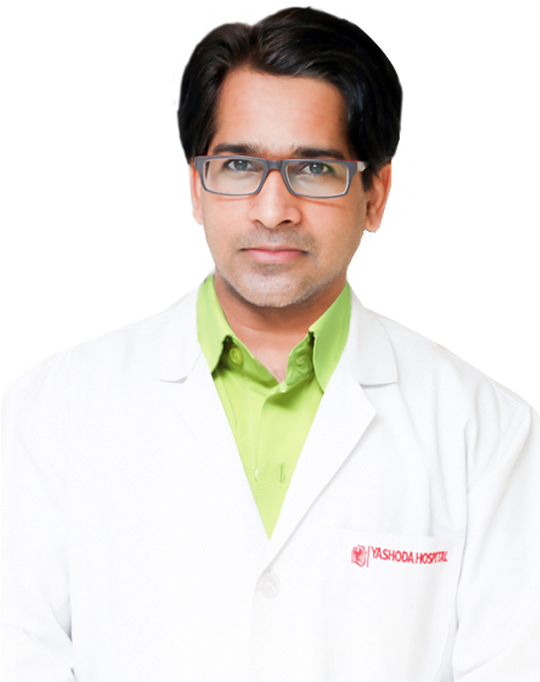
Endobronchial Ultrasound Bronchoscopy (EBUS) at Yashoda Hospital
Our department for Centre for Lungs and Sleep Medicine makes breathing easier for you or your loved one. We reduce anxiety, shortness of breath, increased heart rate, muscle tension, and even feelings of panic, which are caused due to breathing difficulty.
At Yashoda, our goal is to help your loved one regain independence by breathing without assistive devices. We use state of the art technologies to ensure that our expertise continues to be pulmonary disease management and providing quality treatment based on the latest protocols.
What is Endobronchial Ultrasound Bronchoscopy (EBUS)?
Endobronchial ultrasound (EBUS) is a type of minimally invasive procedure that is highly effective in diagnosing lung cancer, infections, and other diseases causing enlarged lymph nodes in the chest. Yashoda hospital is one of Ghaziabad's first centers to offer EBUS and remains a regional leader in volume and overall experience.
Why is EBUS utilized?
EBUS enables physicians to perform a transbronchial needle aspiration (TBNA) technique without conventional surgery to get a tissue or fluid samples from the lungs and surrounding lymph nodes.
These samples can be utilized by doctors for diagnosing and staging lung cancer, identifying infections, and detecting inflammatory diseases that affect the lungs, such as sarcoidosis or cancers like lymphoma.
What makes EBUS different?
During a conventional diagnostic procedure, doctors perform mediastinoscopy, which is a surgery performed to provide access to the chest. In this surgery, a small incision is made in the neck just above the breastbone or next to the breastbone to insert a mediastinoscope, a narrow scope. The mediastinoscope provides access to the lungs and surrounding lymph nodes. From a biopsy, tissue or fluid is collected.
Endobronchial ultrasound is much less invasive than the conventional diagnostic procedure. Using a bronchoscope, the physician performs a needle aspiration on lymph nodes, inserted through the mouth. Through the patient trachea, an ultrasound processor and a fine-gauge aspiration needle is guided.
What are the Benefits of EBUS?
- It provides real-time imaging of the airways' surface, lungs, blood vessels, and lymph nodes.
- The improved and detailed images enable the physician to easily view difficult-to-reach areas.
- It also gives physicians the access to more, and smaller, lymph nodes for biopsy with the aspiration needle than through conventional mediastinoscopy.
- EBUS procedure offers accuracy and speed and lends itself to rapid onsite pathologic evaluation.
- Additional samples can be processed and examined on request and taken immediately if needed
- EBUS is conducted under moderate sedation or general anesthesia.
- Patients can recover rapidly and can usually go home the same day.
What are the risks?
EBUS bronchoscopy is usually a safe procedure, but there is a little chance of problems (complications). These complications can include:
- Some bleeding;
- Infection after EBUS
- Low oxygen levels during or after EBUS
- Collapsed lung.
All these issues can be easily fixed, but it may require an overnight stay in the hospital. Tell your doctor if you ever had trouble with anesthesia or sedation medications.
Make an Appointment
We are eager to help you at every step of your medical journey from hospital and back to your home.
For Appointment
+91 - 9810922042
For Any Query
0120 – 4182000
Meet Our Doctors


